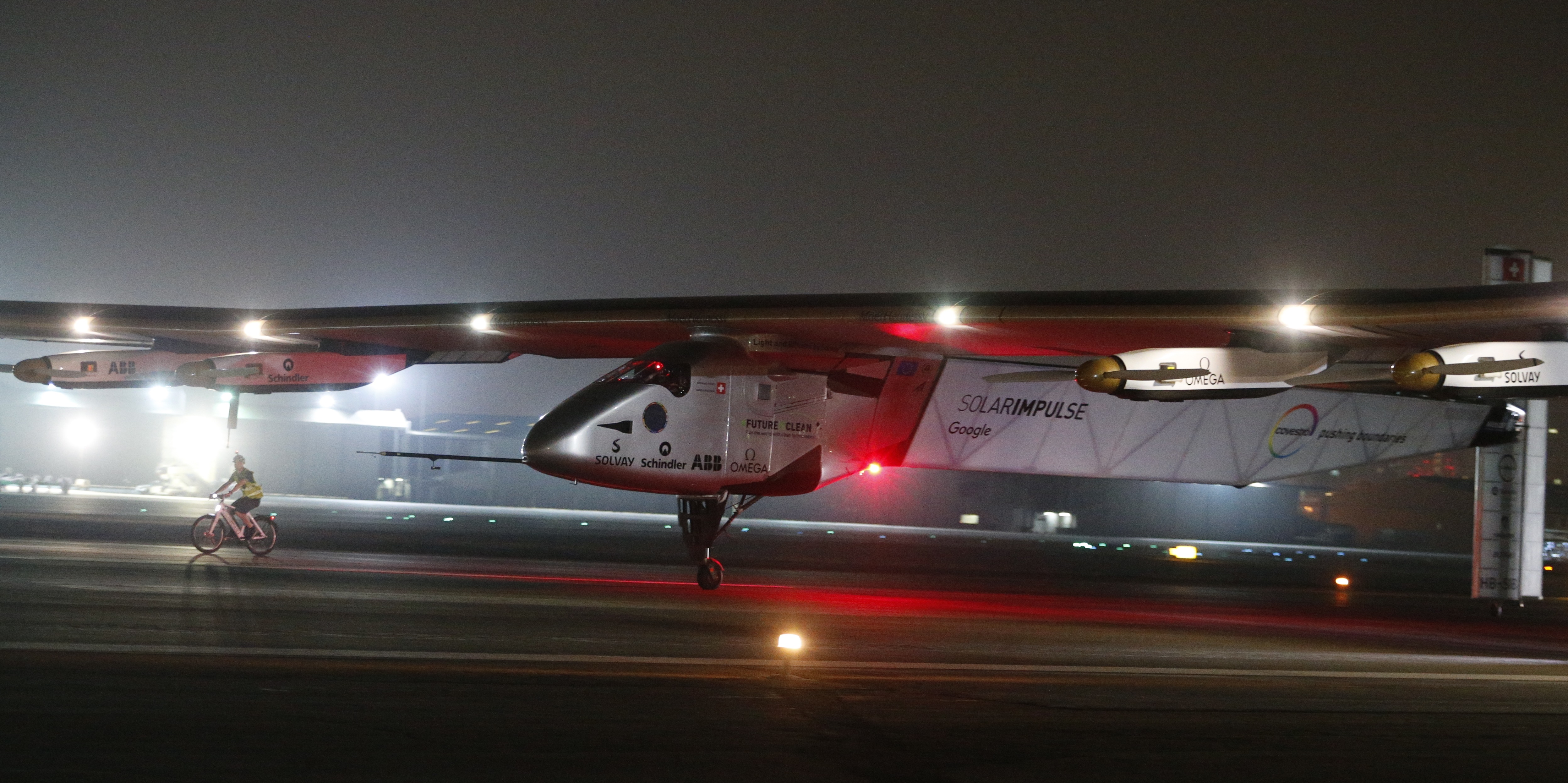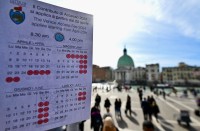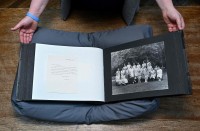
Solar Impulse 2 landed in the UAE early on Tuesday, July 26, 2016, completing its epic journey to become the first sun-powered airplane to circle the globe without a drop of fuel. / AFP PHOTO /
ABU DHABI, United Arab Emirates (AFP) — Solar Impulse 2 took off on March 9, 2015 from Abu Dhabi for the first round-the-world flight using only solar energy, a huge bet on current technology.
The bid was expected to last five months, cover 35,000-kilometers (22,000 miles) and comprise 25 days of actual flying before the craft returned to the United Arab Emirates.
The project was beset by delays and the plane’s total traveled distance exceeded 42,000 kilometers.
But the aircraft — no heavier than a car but with the wingspan of a Boeing 747 — eventually touched down in the Gulf region to complete its odyssey on July 26, 2016.
Here is a timeline of the journey:
– Lift-off –
Solar Impulse 2 (Si2), a four-engine battery-powered aircraft that relies on some 17,000 solar cells embedded in its wings, takes off on March 9, 2015, and lands 13 hours later in Muscat, Oman, with Swiss pilot Andre Borschberg in the cockpit.
The other Swiss pilot and project director, Bertrand Piccard, takes over the next day and flies 1,465 kilometres in 15 hours and 20 minutes to Ahmedabad, India, where administrative delays ground the plane for a few days.
The next two stages see Solar Impulse fly to Varanasi (Benares), India, and Mandalay, in Myanmar.
Cold cockpit, long layover
On March 31, Piccard lands in Chongqing, southwestern China, after flying for 20 hours and a half. He has withstood temperatures in the unpressurized cockpit that fall to minus 20 Celsius (minus four Fahrenheit) as he reaches an altitude of more than 8,500 meters (28,000 feet).
Bad weather keeps Si2 on the ground for more than a month, and Borschberg returns briefly to Switzerland for eye treatment.
On April 21, the plane completes the sixth leg of its journey, reaching Nanjing in eastern China.
It takes off on June 1 for Hawaii, but is re-routed to Nagoya, Japan, owing to bad weather conditions. Another delay of more than a month follows while repairs are made and a daunting cloud bank moves away.
Borschberg makes history
On June 28, Borschberg heads east over the Pacific Ocean and makes a historic crossing that lasts five days and nights before he lands on July 3 in Hawaii. He has flown 8,924 kilometers (5,578 miles) in 117 hours and 52 minutes at an average speed of 61.19 km/hour, the longest uninterrupted journey in aviation history.
Si2’s batteries have overheated however and it sits on the island of Oahu for almost 10 months while repairs are made.
Pacific crossing
On April 21, 2016, Piccard gets his chance to fly across the Pacific and lands almost 63 hours later at Moffett Airfield, south of San Francisco, after dusting the Golden Gate Bridge. Covering 4,086 kilometers, it is one of the most dangerous legs because there were few places to touch down if anything had gone wrong.
The plane resumes its journey across the United States on May 2, stopping in Phoenix (Arizona), Tulsa (Oklahoma), Dayton (Ohio), Lehigh Valley (Pennsylvania) and JFK International Airport in New York after circling the Statue of Liberty in the middle of the night.
Another record
On June 20, Piccard leaves the US and makes the first Atlantic crossing by a solar-powered plane, reaching Seville, Spain, on the 23rd. The 15th stage covers 6,765 kilometers and lasts 71 hours and eight minutes.
Borschberg is back at the controls when Si2 leaves Seville on July 11 for the penultimate leg across the Mediterranean to Cairo that covers 3,745 kilometres in a little under 51 hours.
Piccard flies Si2 on the final leg from Cairo to Abu Dhabi, arriving July 26 in little more than 48 hours, after crossing the Red Sea and the vast Saudi desert.
© 1994-2016 Agence France-Presse







